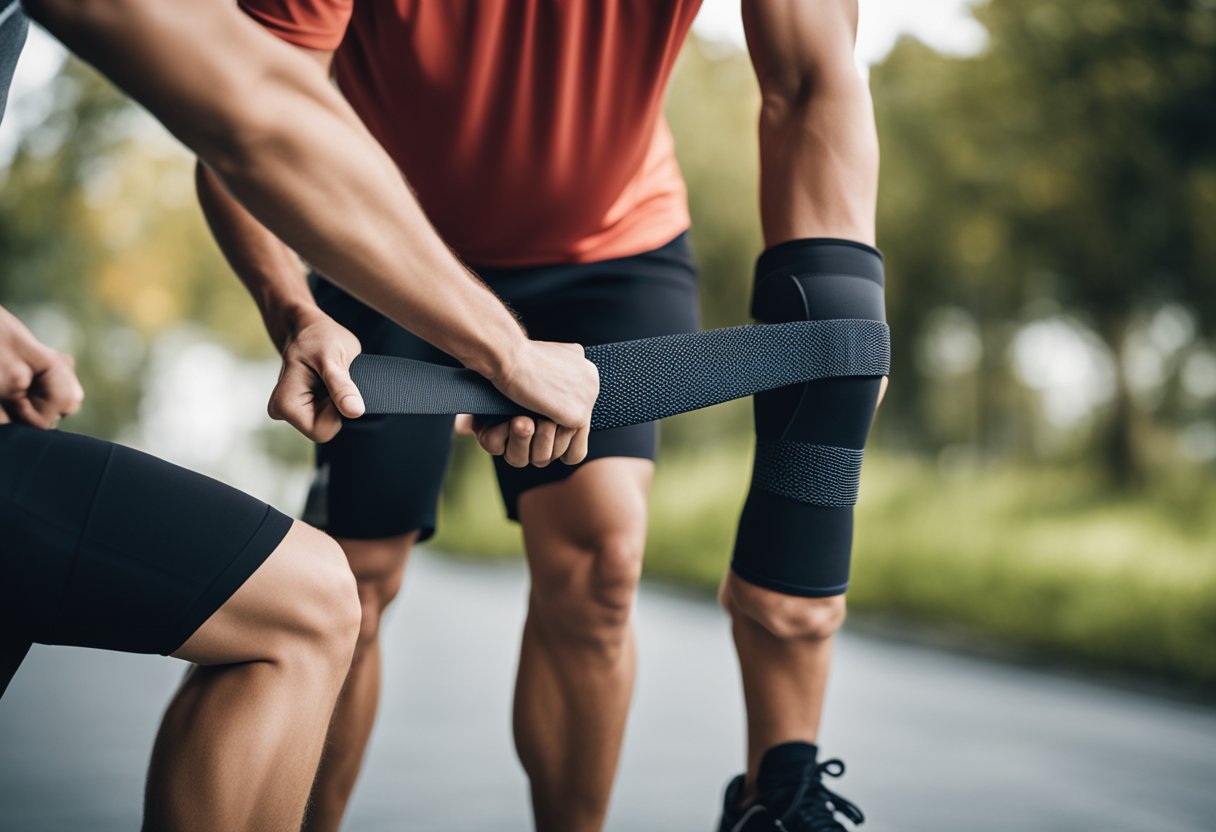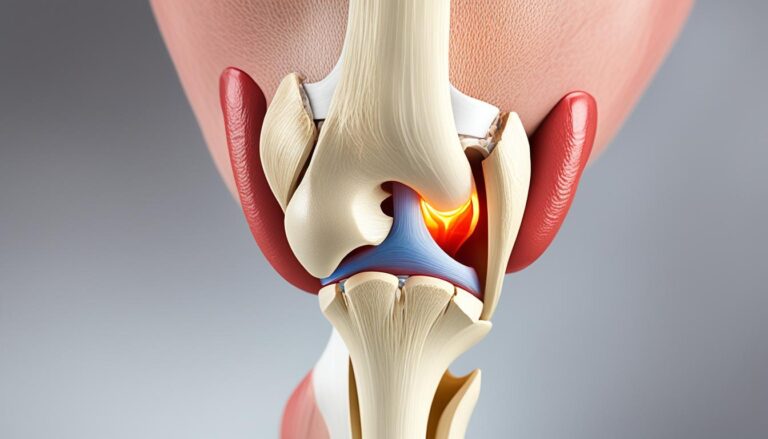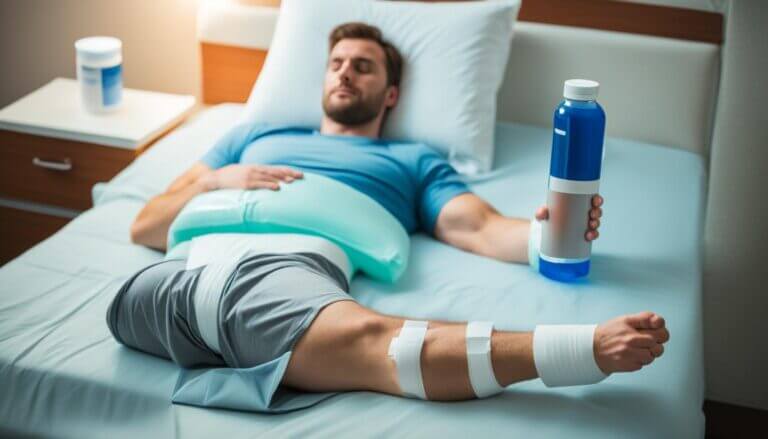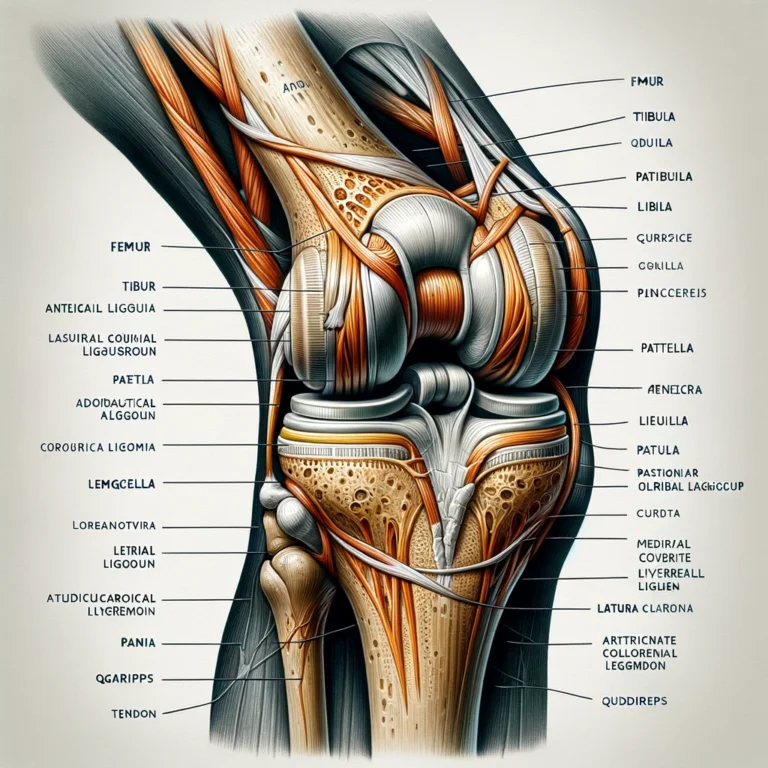What Can Stop Your Knee from Hurting
How to Stop Your Knee from Hurting: Tips and Exercises for Pain Relief
If you’re reading this, chances are you’re experiencing knee pain. Knee pain is a common problem that affects people of all ages. It can be caused by a variety of factors, including injury, overuse, and arthritis. Whatever the cause, knee pain can be frustrating and debilitating. Fortunately, there are steps you can take to stop your knee from hurting.

Understanding Knee Pain Before we dive into how to stop knee pain, it’s important to understand what causes it. Knee pain can be caused by a number of factors, including injury, overuse, and arthritis. Injuries to the knee can include ligament tears, meniscus tears, and fractures. Overuse injuries can be caused by repetitive activities like running and jumping. Arthritis is a condition that causes inflammation in the joints, including the knee.
Treatment and Management The treatment for knee pain depends on the cause. For minor injuries and overuse injuries, rest, ice, compression, and elevation (RICE) can be helpful. Physical therapy can also be helpful in strengthening the muscles around the knee. In some cases, surgery may be necessary to repair the damage. For arthritis, there are a variety of treatments available, including medications, physical therapy, and surgery.
Key Takeaways
- Knee pain can be caused by injury, overuse, and arthritis.
- Treatment for knee pain depends on the cause and can include rest, ice, compression, elevation, physical therapy, and surgery.
- It’s important to seek medical attention if you’re experiencing knee pain that is severe or interfering with your daily life.
Understanding Knee Pain
If you are experiencing knee pain, you are not alone. Knee pain is a common complaint that affects people of all ages. In this section, we will discuss the causes of knee pain, common symptoms and diagnosis, and when to see a doctor.
Causes of Knee Pain
Knee pain can be caused by a variety of factors, including injury, age-related wear and tear, and medical conditions such as arthritis. Osteoarthritis is a common type of arthritis that affects the knee joint. It occurs when the cartilage that cushions the knee joint wears down over time, causing pain, stiffness, and swelling.
In addition to arthritis, knee pain can also be caused by inflammation, tendinitis, bursitis, and meniscus tears. Inflammation can occur when the knee joint is overused or injured, causing swelling and pain. Tendinitis and bursitis are conditions that occur when the tendons or bursae (small fluid-filled sacs) around the knee joint become inflamed. Meniscus tears occur when the cartilage in the knee joint tears, causing pain and swelling.
Symptoms and Diagnosis
Common symptoms of knee pain include pain, stiffness, swelling, and difficulty walking or standing. If you are experiencing knee pain, your doctor may perform a physical exam and order diagnostic tests such as x-rays or an MRI to determine the cause of your pain.
During the physical exam, your doctor will inspect your knee for swelling, pain, tenderness, warmth, and visible bruising. They will also check to see how far you can move your lower leg in different directions. Diagnostic tests such as x-rays and MRI scans can help identify problems with the bones, cartilage, and soft tissues in your knee.
When to See a Doctor
If you are experiencing knee pain, it is important to see a doctor if the pain is severe, lasts for more than a few days, or is accompanied by other symptoms such as fever or redness. In addition, if you experience sudden knee pain after an injury, it is important to seek medical attention right away.
In conclusion, knee pain can be caused by a variety of factors, including injury, age-related wear and tear, and medical conditions such as arthritis. If you are experiencing knee pain, it is important to see a doctor for a proper diagnosis and treatment.
Treatment and Management
If you’re experiencing knee pain, there are several methods of treatment and management that can help alleviate your discomfort. In this section, we will discuss some of the most effective options for immediate pain relief, as well as long-term management strategies and surgical options.
Immediate Pain Relief
When you’re experiencing knee pain, immediate pain relief is the first priority. Here are some methods that can help:
- Ice: Applying ice to the affected area can help reduce inflammation and swelling, which can help alleviate pain. Apply ice for 15-20 minutes at a time, several times a day.
- Rest: Giving your knee some rest can help reduce stress on the joint and alleviate pain. Avoid activities that exacerbate your pain, and take breaks throughout the day to rest your knee.
- Compression: Applying compression to the affected area can help reduce swelling and alleviate pain. Use a compression bandage or wrap to apply pressure to the area.
- Elevation: Elevating your knee can help reduce swelling and alleviate pain. Prop your leg up on a pillow or cushion to keep it elevated.
Long-Term Management Strategies
In addition to immediate pain relief, there are several long-term management strategies that can help alleviate knee pain:
- Exercise: Strengthening the muscles around your knee can help provide support and reduce stress on the joint. Low-impact exercises like swimming, cycling, and yoga can be particularly helpful.
- Physical therapy: Working with a physical therapist can help you develop a personalized exercise plan that targets the specific causes of your knee pain. Your physical therapist can also help you learn proper form and technique to prevent further injury.
- Medications: Your doctor may prescribe medications to help alleviate pain and reduce inflammation. Nonsteroidal anti-inflammatory drugs (NSAIDs) like ibuprofen and acetaminophen can be particularly effective.
- Injections: If other treatments are not effective, your doctor may recommend injections of corticosteroids or hyaluronic acid to reduce inflammation and alleviate pain.
Surgical Options
If other treatments are not effective, surgery may be necessary to alleviate knee pain. Here are some surgical options that may be recommended:
- Arthroscopy: This minimally invasive procedure involves inserting a small camera into the knee joint to evaluate and repair damage.
- Knee replacement: If the damage to your knee is severe, your doctor may recommend knee replacement surgery. This involves replacing the damaged joint with an artificial joint.
- Total knee replacement: In some cases, a total knee replacement may be necessary. This involves replacing the entire knee joint with an artificial joint.
Overall, there are many effective methods of treatment and management for knee pain. By working with your doctor and following a personalized treatment plan, you can alleviate your pain and improve your quality of life.
Frequently Asked Questions

What are effective home remedies for treating knee pain?
There are several home remedies that can help alleviate knee pain. Applying ice to the affected area for 15-20 minutes at a time, several times a day, can help reduce swelling and inflammation. Elevating the knee above the heart can also help reduce swelling. Over-the-counter pain relievers such as acetaminophen or ibuprofen can help reduce pain and inflammation. Additionally, using a knee brace or compression sleeve can help provide support and reduce pain.
Which stretches are recommended to alleviate knee pain?
Stretching can help alleviate knee pain by improving flexibility and reducing tension in the muscles surrounding the knee joint. Some recommended stretches include hamstring stretches, quadriceps stretches, and calf stretches. It’s important to stretch gently and avoid overstretching to prevent further injury.
What could be the underlying causes of persistent knee pain?
Persistent knee pain can be caused by a variety of factors, including arthritis, tendinitis, bursitis, meniscus tears, or ligament injuries. It’s important to see a healthcare provider for an accurate diagnosis and treatment plan.
What are some walking tips to ease knee discomfort?
When walking with knee discomfort, it’s important to wear comfortable and supportive shoes. Walking on a flat surface can help reduce stress on the knee joint. Shortening stride length and taking smaller steps can also help reduce impact on the knee joint.
How can one address knee pain resulting from exercise?
Knee pain resulting from exercise can be addressed by taking a break from the activity causing the pain and allowing the knee to rest and heal. It’s important to gradually increase the intensity and duration of exercise to avoid overuse injuries. Strengthening the muscles surrounding the knee joint can also help prevent knee pain.
What are the best pain relief options for seniors with knee pain?
Seniors with knee pain can benefit from over-the-counter pain relievers such as acetaminophen or ibuprofen. Topical pain relievers such as creams or gels can also provide relief. Additionally, low-impact exercises such as swimming or cycling can help reduce knee pain and improve mobility. It’s important to consult with a healthcare provider before starting any new exercise regimen.






